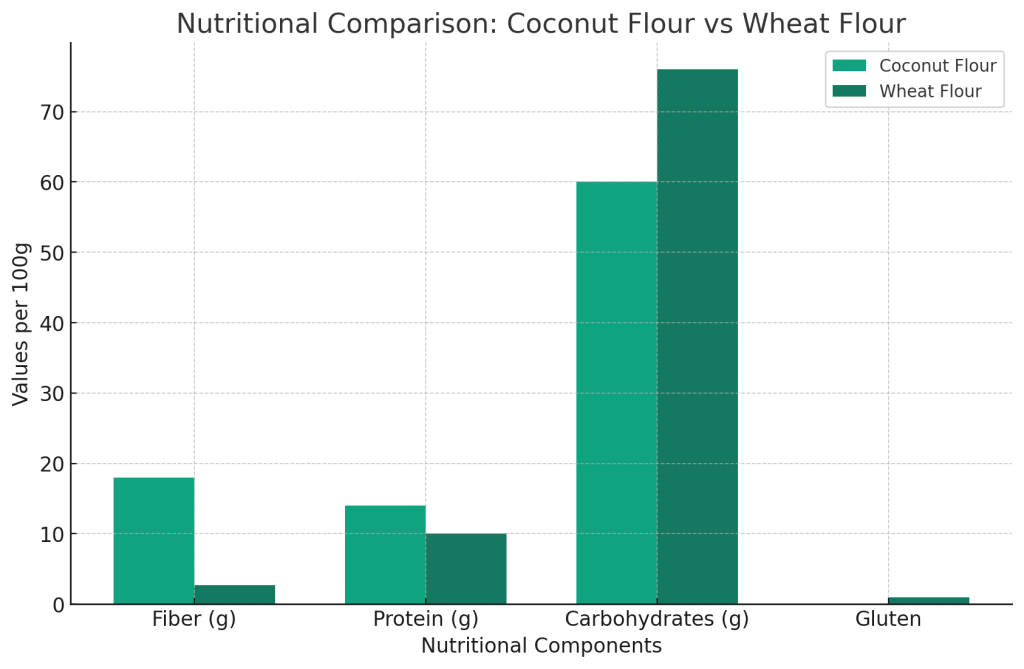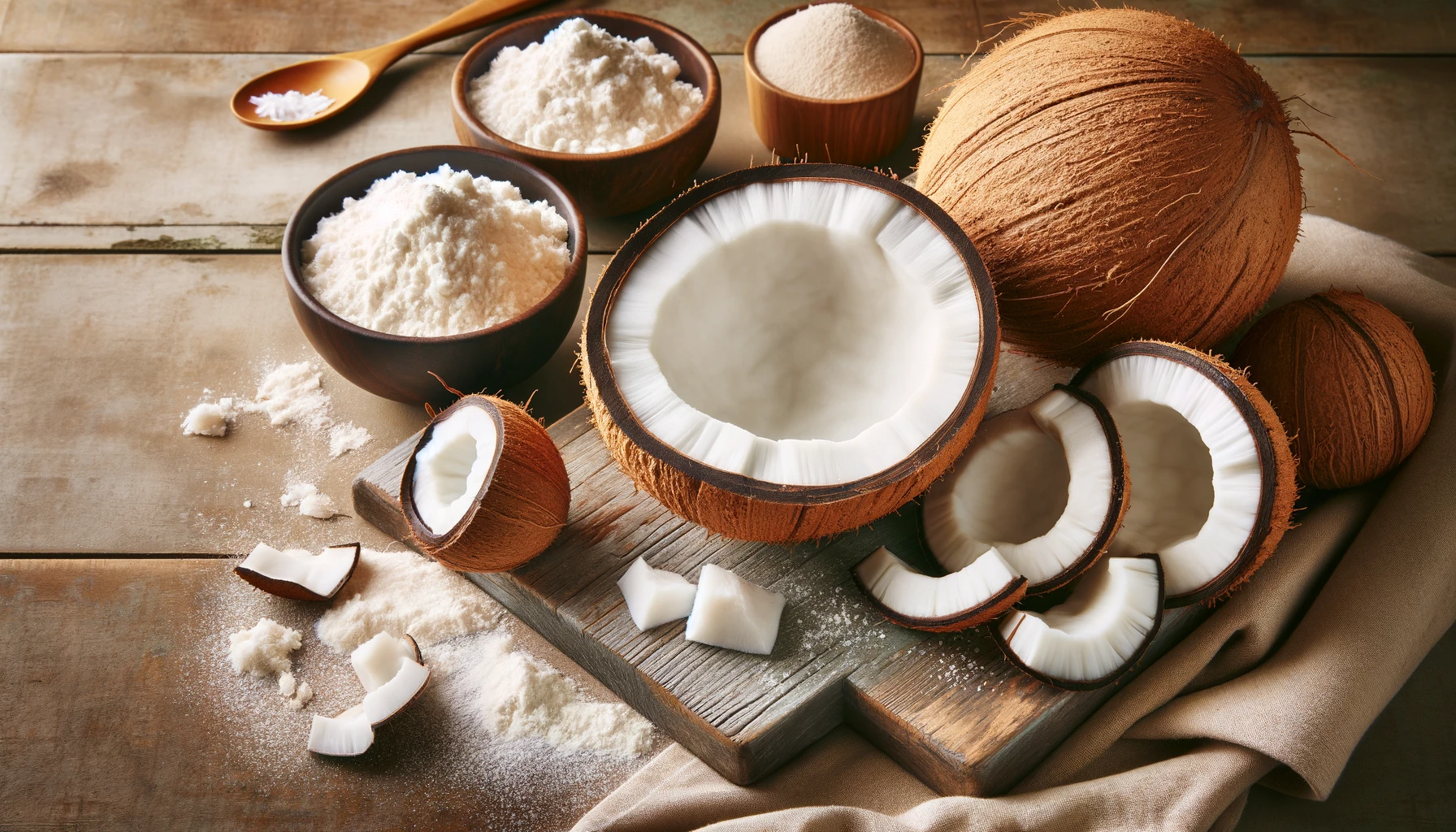| Aspect | Details |
|---|---|
| Appearance | Fine, powdery texture, often pale beige or off-white |
| Composition | Made from dried coconut meat |
| Nutritional Benefits | High in fiber and protein, gluten-free, low in carbohydrates |
| Culinary Uses | Ideal for gluten-free and paleo diets, used in baking and cooking |
| Preparation Tips | Requires less quantity than wheat flour, needs additional liquids in recipes |
What Does Coconut Flour Look Like
What Does Coconut Flour Look Like?
Coconut flour, a staple in many health-conscious kitchens, presents a unique appearance and texture. It’s characterized by its fine, powdery consistency, typically pale beige or off-white in color. Originating from dried coconut meat, this flour retains a subtle hint of the natural sweetness and aroma of coconut.
The Nutritional Profile of Coconut Flour
A powerhouse of nutrition, coconut flour is celebrated for its high fiber and protein content. It stands out as a gluten-free and low-carbohydrate alternative to traditional wheat flour, making it a favorite among those following gluten-free, paleo, or low-carb diets. This flour is not only versatile but also packs a healthy punch, offering a range of vitamins and minerals.
Culinary Applications of Coconut Flour
In the culinary world, coconut flour has gained immense popularity. Its versatility shines in various recipes, especially in baking. When using coconut flour, it’s crucial to remember that it behaves differently than wheat flour. Due to its high absorbency, recipes typically require less coconut flour and more liquid to maintain the desired consistency. This unique flour can transform ordinary baked goods into nutritious treats suitable for various dietary needs.
Exploring the Inside of a Coconut
Delving deeper into the world of coconuts, we find a trove of valuable components. From the fiber-rich and nutritious coconut meat to the electrolyte-laden coconut water, each part of the coconut offers unique health benefits and uses. Understanding these elements helps us appreciate the versatility of coconut flour even more.
To further explore the fascinating world of coconuts, consider reading about the different aspects and appearances of coconuts on our website:
- Discover what the inside of a coconut looks like
- Learn about the appearance of coconut water
- Find out what expired coconut oil looks like
- Uncover what a ripe coconut looks like
- Explore the appearance of a coconut seed
- See what a coconut tree looks like
- Understand what cream of coconut looks like
For more insights and in-depth articles on coconuts and their many uses, visit CoconutSphere.

Tips for Baking with Coconut Flour
Baking with coconut flour can be a delightful experience if approached correctly. Here are some tips to ensure success in your coconut flour culinary ventures:
- Measure Accurately: Coconut flour’s high absorbency means that even a little extra can drastically change the texture of your baked goods. Use a kitchen scale or level measuring cups for precision.
- Increase Liquids: Since coconut flour absorbs more liquid than other flours, recipes usually require additional eggs or other liquids to prevent dryness.
- Blend Well: Ensure thorough mixing to avoid clumps and achieve a uniform texture in your final product.
- Experiment with Recipes: Start with tried-and-tested coconut flour recipes before modifying your favorite traditional recipes.
Comparing Coconut Flour to Wheat Flour
When substituting coconut flour for wheat flour, it’s not a straightforward one-to-one exchange. Coconut flour’s unique properties require adjustments in the recipe. Generally, you’ll use about 1/4 to 1/3 cup of coconut flour for every cup of wheat flour. Also, for every cup of coconut flour used, add an additional 6 eggs and a cup of liquid to the recipe. This adjustment maintains the moisture and structure that wheat flour typically provides.
Health Benefits of Coconut Flour
Coconut flour is not just a culinary alternative; it’s a healthier choice. High in dietary fiber, it aids in digestion and helps maintain blood sugar levels. Its low carbohydrate content makes it suitable for diabetic diets, while the high protein content supports muscle health. Furthermore, coconut flour is gluten-free, making it a safe option for those with gluten sensitivities or celiac disease.
The Versatility of Coconut in Cuisine
The world of coconut extends beyond flour. Every part of the coconut, from the water to the oil, has unique culinary applications. Coconut water serves as a hydrating drink, while coconut oil is a versatile cooking fat. The coconut meat itself can be used fresh, dried, or processed into milk or cream, offering a range of textures and flavors for various dishes.
For a more comprehensive understanding of coconut’s versatility, explore these aspects on our website:
- Learn how to use coconut water in your recipes
- Understand the benefits and uses of coconut oil
- Discover the many forms and uses of coconut meat and coconut milk
Visit CoconutSphere for more engaging and informative articles about coconuts and their multifaceted uses in our daily lives.

